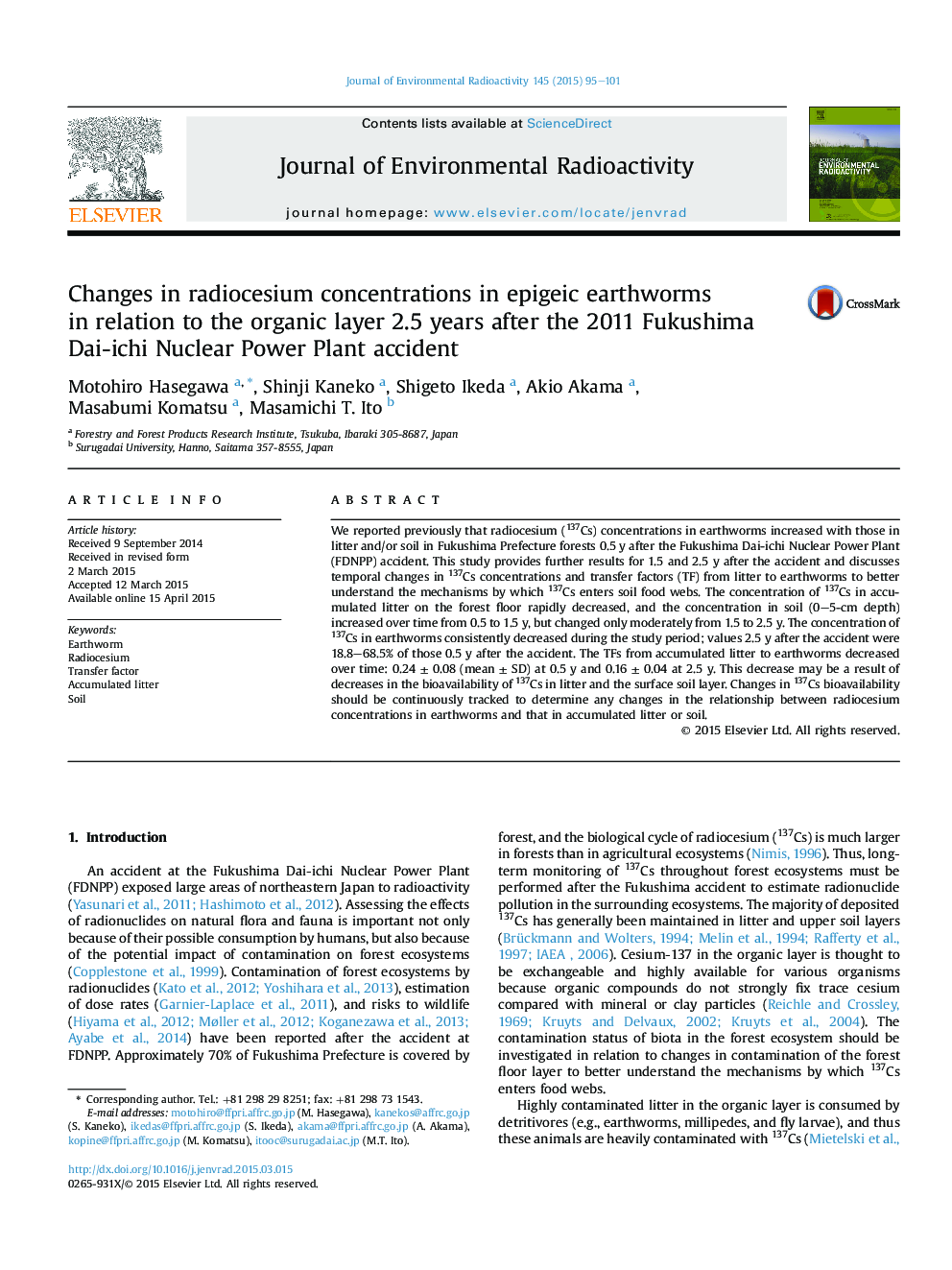| Article ID | Journal | Published Year | Pages | File Type |
|---|---|---|---|---|
| 1737876 | Journal of Environmental Radioactivity | 2015 | 7 Pages |
•We investigated radiocesium concentrations in soil, litter and earthworms.•Radiocesium concentration in earthworms consistently decreased after the accident.•Transfer factors from accumulated litter to earthworms tended to be smaller after 2.5 years.•The 134Cs/137Cs ratio in earthworms was similar to that in accumulated litter.
We reported previously that radiocesium (137Cs) concentrations in earthworms increased with those in litter and/or soil in Fukushima Prefecture forests 0.5 y after the Fukushima Dai-ichi Nuclear Power Plant (FDNPP) accident. This study provides further results for 1.5 and 2.5 y after the accident and discusses temporal changes in 137Cs concentrations and transfer factors (TF) from litter to earthworms to better understand the mechanisms by which 137Cs enters soil food webs. The concentration of 137Cs in accumulated litter on the forest floor rapidly decreased, and the concentration in soil (0–5-cm depth) increased over time from 0.5 to 1.5 y, but changed only moderately from 1.5 to 2.5 y. The concentration of 137Cs in earthworms consistently decreased during the study period; values 2.5 y after the accident were 18.8–68.5% of those 0.5 y after the accident. The TFs from accumulated litter to earthworms decreased over time: 0.24 ± 0.08 (mean ± SD) at 0.5 y and 0.16 ± 0.04 at 2.5 y. This decrease may be a result of decreases in the bioavailability of 137Cs in litter and the surface soil layer. Changes in 137Cs bioavailability should be continuously tracked to determine any changes in the relationship between radiocesium concentrations in earthworms and that in accumulated litter or soil.
